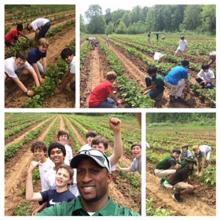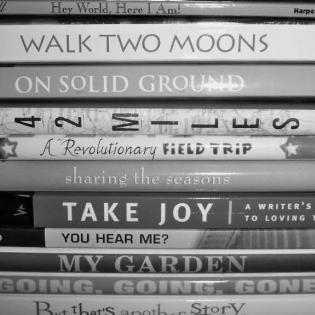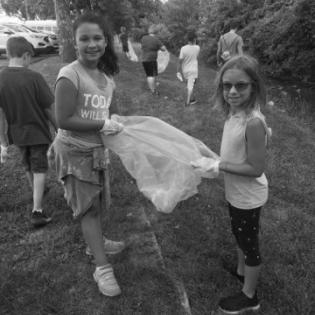This Mini-Course provides a background for teaching the “Food for Thought” Middle School service-learning unit for the seventh grade. The "Food for Thought" unit covers how food is grown and harvested, the challenges of meeting the basic need of food, and the issue of food insecurity in the world. The multi-disciplinary 3-4 week curriculum is available for free on Learning to Give.
Filter by subjects:
Filter by grades:
Filter by audience:
Filter by issue area:
Filter by content type:
Filter by resource type:
resource search
Written by Krisztina Tury
Definition
Book Spine Poetry
Make a poem from the titles of books found in your library.
This activity may be done alone, in a small group, or even virtually in a group meeting.
This resource guide was designed by a Detroit-area educator with the goal of guiding educators with two citizenship themes: building a caring community and social justice in a diverse country. The resource includes video, literature guides, discussion starters, activities, and lessons intended to empower youth voice and guide them to a service project of interviewing someone and sharing their story of generosity.
In this lesson the learners will be introduced to some of the individuals/Heroes whose acts of tikun olam provide important models. Having developed a better understanding of tikun olam based upon Sefer Yetzirah and other classical and modern sources on the topic of how the...
The learners view works of art that advocate for social change and find that art can influence social change. The learners select an issue of human rights and create a work of art that represents the issue. They write a paragraph of explanation about their work.
From history we know that working in community (not on our own) is the best way to make change. Young people explore the work of nonprofits related to equity and social justice.
The Free Breakfast for Children Program of the 1960s exemplified mutual aid and differed from traditional charity while still being a form of philanthropy. We discover and learn how the people of a community most affected by issues, including young people, are sometimes the most able to...
We examine the authority to act, whether the authority comes from self or government. This lesson looks at our rights and responsibilities in the founding documents of our country. We discuss the purposes of the Constitution, Preamble to the Constitution, and the Bill of Rights.
Learners make a talent chain for the group. This is a representation of the many strengths and talents each learner brings, making the whole group strong. A children's book sparks a joyful idea for community members to connect over art, and the learners establish a relationship with people at a...


